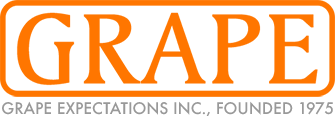What things look like when global demand, exchange rates. and tariffs cancel each other out.
August’s tariff news was something we will take as a positive, despite any media spin to the contrary. In case you’ve been in the dark, mid-August marked the deadline for the USTR’s mandatory 180 day review in which existing tariffs related to the Boeing/Airbus dispute could be shuffled and modified (in this case there were threats of up to 100% tariff on certain items including wine). In the end no changes were made to the current tariff schedule – Wine at 14% ABV or below from Spain, Germany, France, and the United Kingdom in 750ml or smaller packages will remain tariffed at 25%, and we have another 180 day window until this will become an issue again.
Does this mean status quo for us? Not really. Over the last year, 99% of the talk about the business side of wine importation/distribution has centered around tariffs, yet tariffs are only one piece of what we call the “trinity” that guides our decision making when purchasing wine for you, with the other two pieces being global category demand and the USD-EUR exchange rate. Through the lens of this “trinity” let’s have a quick look at where we are as we head into Fall of 2020.
TARIFFS
We’ve covered the tariff issue forward and backward and don’t see a need to revisit it on this page. USTR tariffs have been a burden on cash flow for everyone involved since they are due upon arrival of product in port, and these tariffs have resulted in some modest price increases (most of which we posted this Winter). Many predicted doom for popular tariff impacted categories, and exports of these categories to the USA are indeed way down, in some reports implying a decline as steep as 50%. While overall import volumes are down, we say this is mostly due to cautious purchasing on the part of importers – For many importers in our industry uncertainty and resistance to change meant temporary paralysis. What about us at Grape you ask? We for the most part chose not to discontinue items or slow down purchases on tariff impacted categories and have not seen huge drops in demand for tariff-impacted wines.
We did, however, increase our position on 3L bag-in-box due the fact that this size category was exempt regardless of ABV, and the unexpected COVID situation created a surprise boom in 3L bag-in-box sales. With neither COVID or the current tariff schedule going away for at least another six months, you’ll see us quadruple down on 3L bag-in-box both in terms of inventory and new options. With 3L bagin-box being a bit of an outlier, our overall take on the tariff situation is that the market will take care of any export sales slumps, and that many categories of tariff impacted wines have arrived and/or will arrive in market at or even below PRE-tariff retail pricing thanks to the other two factors in the “trinity” – Changes in global demand and current exchange rates. Does this sound implausible? Read on.
GLOBAL DEMAND
Four markets dominate the global volume needs when it comes to exports from the European Union – The US, the UK, Hong Kong, and China. Demand for European wine could not have started more poorly in 2020, with Hong Kong essentially closed due to civil unrest, importers in the US market putting shipments on indefinite hold due to tariff uncertainty, UK importers putting shipments on hold due to Brexit/tariff/exchange rate uncertainty, and China partially closing due to the emergence of COVID there in January. By March we added a what had developed into a global COVID pandemic to the mix (meaning close to zero on-premise trade in all countries), and wineries were looking at a most unthinkable situation in terms of export projections.
Wineries in most cases held existing pricing through the Spring, and by early Summer we started to see volume-based pricing that we never would have imagined in categories with high percentages of restaurant consumption (think Sancerre and Champagne). The deals we’ve been presented in these categories have been more mouthwatering than a flute of Orpale, but we were forced to hold off on any speculative purchases in fear that the Trump Administration would shuffle tariff categories between loading date and late summer product arrival here in the USA.
Now that we are temporarily clear of tariffs, it is time to play. How low have things dropped though? If you looked at average costs now versus the menu of ex-winery costs by category we posted online this winter, you’ll see many have dropped quite a bit. Our low cost basis for Sancerre Blanc at that point was 7,40 euros – We’ve been seeing offers in the low 6,00 euro range lately. Our low cost basis for NV Brut Champagne at that point was 11,40 euros – Producers are creeping towards 10,00 euros at this point and wild one-off offers for cash strapped producers will only increase with global Champagne exports trending at just 50% of the appellation’s calendar year 2020 expectation.
So … You’ll see us pull the trigger on many of the mouthwatering deals that have been presented to us over the last few months as producers look to create cash flow (and space) for the 2020 harvest. In short, we will enthusiastically book as many crazy deals as all of you, our wholesale customers, think you can sell.
EXCHANGE RATES
Wild pricing on all of your favorite European wine categories sounds exciting, but exchange rates have as much an impact on the market as global demand and tariffs. In recent months the US dollar has weakened against the Euro – It now sits at 1.18 and threatens to weaken further into v the 1.2’s or beyond. For reference we were as low as 1.08 this Winter and as high as 1.35 at this time six years ago. As a rough yardstick, you can assume that for every 0.1 worth of exchange rate change you’ll end up with a retail shelf price change of between 7-10% depending on base cost.
TYING THINGS TOGETHER
With the above in mind, as you can imagine there are a dizzying number of exchange rate/tariff/price-based demand scenarios we could run, and many of you are asking us how things realistically look for Fall/Winter of 2020 compared to where we’ve been since this time last year. Warm recent vintages and no tariff changes mean that most Sancerre (and most appellations on the “edge” of 14% ABV in normal years) are coming in at a tariff exempt 14%+ ABV, and we will assume a mid-Fall exchange rate of 1.2
Fall 2019
Sancerre at €7,40 cost
No tariff
$23 retail
Winter 2019
Sancerre at €7,40 cost
1.08 exchange rate
Subject to tariff
$28 retail
Spring 2020
Sancerre at €7,40 cost
1.08 exchange rate
No tariff due to high ABV
$23 retail
Summer 2020
Sancerre at €7,40 cost
1.20 exchange rate
No tariff due to high ABV
$25 retail
Fall 2020
Sancerre at €6,50 cost
1.20 exchange rate
No tariff due to high ABV
$23 retail
This means that the average winery discounted, warm vintage, tariff exempt value-tier Sancerre you purchase this October will probably retail around $23 – the same retail price as the Sancerre you purchased last September, before the wine world went crazy with the one-two punch of tariffs and COVID. As far as direct import deals go, we expect to offer some options to you at or slightly below $20 retail.
We suppose this is a long way of saying that despite all of the noise, your wines should be on average coming in at the same prices this Fall as they did last Fall before everything went “crazy.” This isn’t really all that exciting, so you’ll never see it written about in the mainstream, but we find it kind of interesting if not a bit of a pleasant/positive surprise during a year when we will take any and all good news we can dig up.


